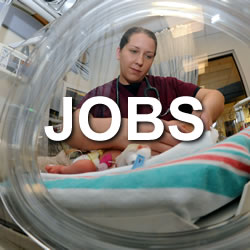Cadavers
You are a person and then you cease to be a person, and a cadaver takes your place - Mary Roach

image by: Edward Allen Lim
HWN Suggests
The Secret Lives of Cadavers
The federal government does not monitor whole body donations in the United States, but researchers estimate each year fewer than 20,000 Americans donate their bodies to medical research and training. While organ donation is a point of pride, body donation is often stigmatized.
Most people have only a vague notion of what “body donation” even means. The thought alone frightens, or even disgusts, many people. And scandals involving the illegal sale of body parts, and other snafus, have inspired distrust in body donation programs.
But a closer look reveals the process as both…
Resources
 Giving Back an Identity To Donated Cadavers
Giving Back an Identity To Donated Cadavers
Bodies, donated either by the deceased or survivors, are whisked away quickly after death, so many families have welcomed the chance to meet with the students dissecting their loved one's body, and to participate in an end-of-semester memorial service.
 Learning Anatomy in a Digital Age
Learning Anatomy in a Digital Age
Medical students at Columbia University are using digital technology to breathe new life into a process hundreds of years old: dissecting a cadaver from head to toe.
Cadavers and Curios from the Dawn of Modern Medicine
Illustrations from the new book Dr. Mütter’s Marvels chronicle the tools available to 19th-century Philadelphia doctor and medical innovator Thomas Mütter.
How Cadavers Made Your Car Safer
Cadavers have been essential to making driving safer since the 1930s, when researchers at Wayne State University threw a body down an elevator shaft to determine the forces it could endure. Every part of a car touching on safety — from steering columns and laminated windshields to side-impact air bags — drew from tests with cadavers to ensure they work.
How Grave Robbers And Medical Students Helped Dehumanize 19th Century Blacks And The Poor
The history of autopsy and dissection of human bodies in the United States may seem like an innocuous topic, a necessary means to study life and its inevitable end. But in the 19th century, the vast majority of people who were dissected and autopsied were socially and economically marginalized groups.
Learning Empathy From the Dead
The first-year dissection is often an experience that teaches medical students to emotionally detach from their patients. By forcing future doctors to learn about the lives of their cadavers, some medical schools are trying to reverse the effect.
Living Cadavers: How the Poor Are Tricked Into Selling Their Organs
It may sound reasonable, paying for an organ from someone who could use the money more than an intact anatomy. But the real picture is grim. In a research paper published last week in Medical Anthropology Quarterly, Michigan State anthropologist Monir Moniruzzaman recounts the nearly 15 months he spent doing fieldwork in Bangladesh, where he infiltrated the illegal organ trafficking network. What he saw there he describes as nothing short of exploitation.
Med Schools Cut Out Cadavers
Top medical schools are cutting out cadavers from their curriculums, dismaying traditionalists who insist every future doctor needs to poke around a dead person before touching a live one. But administrators say their students are just too overloaded to take on the tedious chore of dissecting a human body.
Synthetic Cadavers Offer An Equally Creepy Alternative To The Real Thing
So maybe synthetic cadavers will catch on in a big way — or maybe they won’t. But no matter how you slice it, they certainly aren’t the kind of thing we’d like to cuddle up with.
The Earliest Crash Test Dummies Were Cadavers
There were other problems with this method, besides the obvious ones: Cadavers do not come in standard shapes, and in crashes they don't behave like the bodies of living people. Pigs were also early test subjects.
The Metal Tables
At the end of the year, we hold a memorial ceremony, giving thanks to the friends of families of those who donated their bodies to the Anatomy Department at Loma Linda. Throughout the serene program, many students delivered moving testimonies of their experiences in the cadaver lab.
The Unexpected Link Between Cadavers and Careers
If you happen to be in need of human cadavers, you'll have more success targeting married nursery school teachers than, say, married cowboys or firefighters.
The Virtual Reality App That Could Do Away With Medical Cadavers
Just as Leonardo Da Vinci's 1500s sketches of human anatomy revolutionised early medicine, a new virtual reality app is pushing the field of anatomy into the future.
What Is It Like for a Medical Student to Cut Open a Body for the First Time?
We all become corpses. We can only hope that there will be someone who loves us enough to tell our stories at least one more time.
 The Secret Lives of Cadavers
The Secret Lives of Cadavers
How lifeless bodies become life-saving tools.
9 Ways You May Not Realize Dead Bodies Help Make Our Lives Better
When people die and leave their bodies to science, it can result in much more than a simple organ donation.
MedCure
MEDCURE connects people wanting to donate their bodies to science - WHOLE BODY DONORS - with the physicians and anatomical researchers that are uncovering tomorrow’s medical breakthroughs.

Introducing Stitches!
Your Path to Meaningful Connections in the World of Health and Medicine
Connect, Collaborate, and Engage!
Coming Soon - Stitches, the innovative chat app from the creators of HWN. Join meaningful conversations on health and medical topics. Share text, images, and videos seamlessly. Connect directly within HWN's topic pages and articles.













